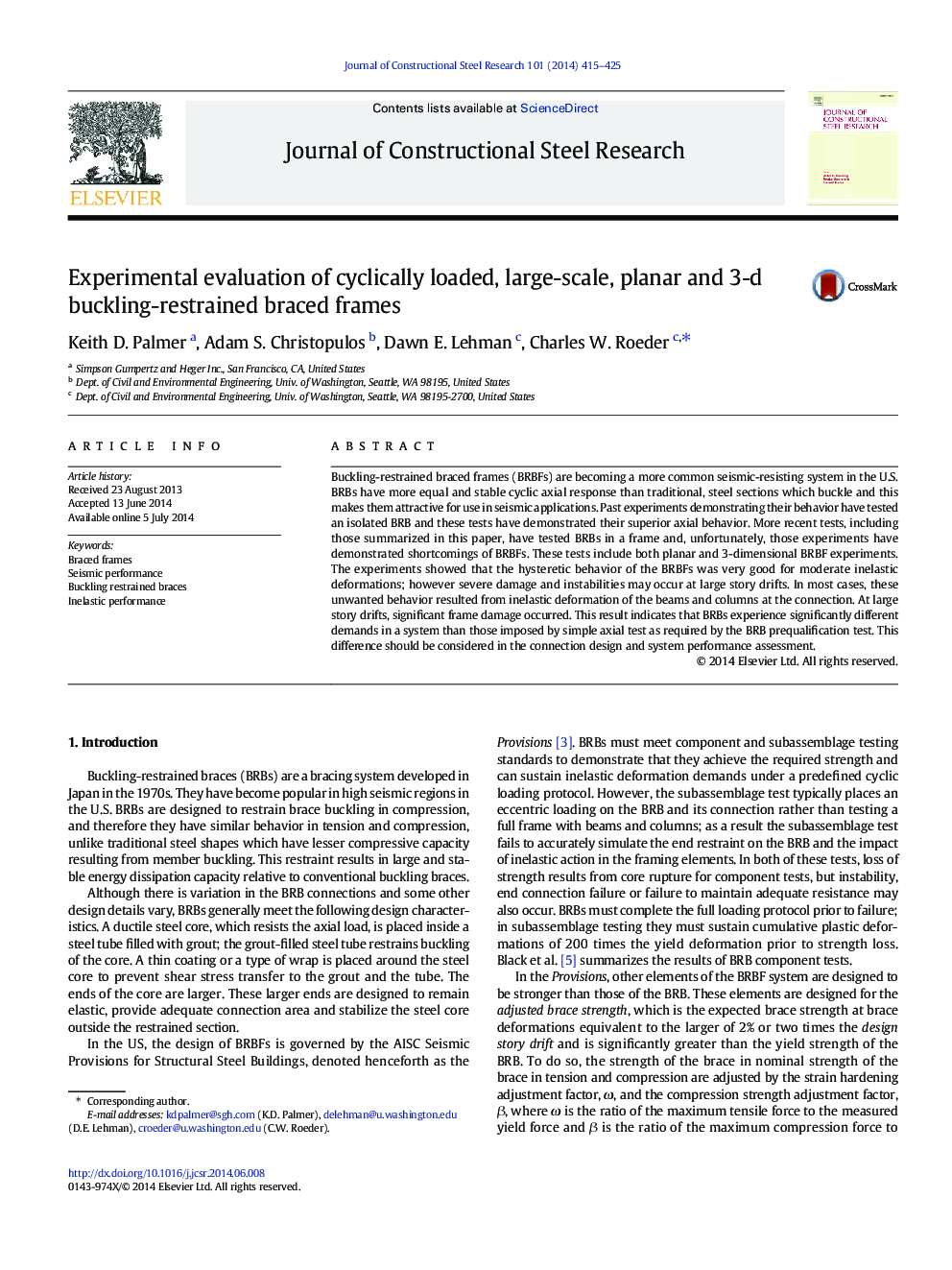| کد مقاله | کد نشریه | سال انتشار | مقاله انگلیسی | نسخه تمام متن |
|---|---|---|---|---|
| 284671 | 509156 | 2014 | 11 صفحه PDF | دانلود رایگان |

• Describes inelastic performance of two types of BRBF.
• BRBs provide good inelastic performance but connections sustain damage.
• Different BRB connection strategies described.
• Load sharing with steel shell provides significant part of the compressive hardening.
Buckling-restrained braced frames (BRBFs) are becoming a more common seismic-resisting system in the U.S. BRBs have more equal and stable cyclic axial response than traditional, steel sections which buckle and this makes them attractive for use in seismic applications. Past experiments demonstrating their behavior have tested an isolated BRB and these tests have demonstrated their superior axial behavior. More recent tests, including those summarized in this paper, have tested BRBs in a frame and, unfortunately, those experiments have demonstrated shortcomings of BRBFs. These tests include both planar and 3-dimensional BRBF experiments. The experiments showed that the hysteretic behavior of the BRBFs was very good for moderate inelastic deformations; however severe damage and instabilities may occur at large story drifts. In most cases, these unwanted behavior resulted from inelastic deformation of the beams and columns at the connection. At large story drifts, significant frame damage occurred. This result indicates that BRBs experience significantly different demands in a system than those imposed by simple axial test as required by the BRB prequalification test. This difference should be considered in the connection design and system performance assessment.
Journal: Journal of Constructional Steel Research - Volume 101, October 2014, Pages 415–425